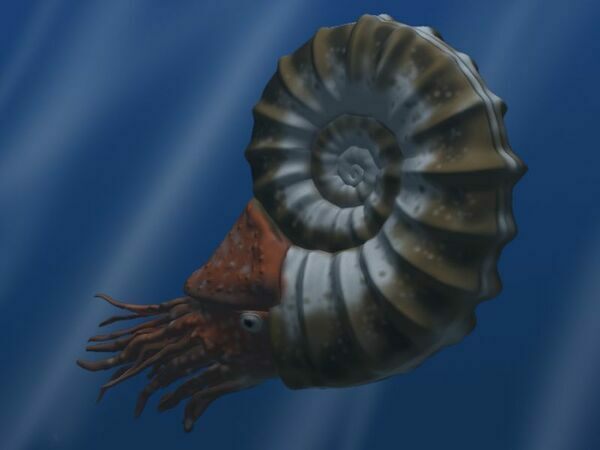This Specimen has been sold.
4.7" Fossil Heteromorph (Nostoceras) Ammonite Cluster - Madagascar
This is a really cool cluster of two heteromorph ammonite (Nostoceras malagasyense) fossils from Madagascar. Unlike most ammonites that lived in tightly coiled, spiral shell that retains their shape throughout the cephalopod's life, heteromorph ammonites have irregularly-coiled or uncoiled shells. These heteromorph ammonites are Late Cretaceous in age (Campanian Stage) or approximately 70 million years old.
Almost all of the surrounding limestone has been painstakingly removed to provide the best picture of the entire ammonite fossils. There are two crack repairs and some spots of restoration on thee ammonites.
Comes with an acrylic display stand.
Almost all of the surrounding limestone has been painstakingly removed to provide the best picture of the entire ammonite fossils. There are two crack repairs and some spots of restoration on thee ammonites.
Comes with an acrylic display stand.
About Ammonites
Ammonites were ancient marine cephalopods, similar to today's squids and octopuses, but with a defining feature: their distinctive, tightly coiled spiral shells. These shells, resembling those of modern nautiluses, served as both a protective home and a buoyancy aid, allowing ammonites to navigate the prehistoric seas with ease. First emerging around 240 million years ago in the Triassic Period, ammonites thrived for over 175 million years, adapting through numerous forms and sizes. As predatory creatures, they likely fed on smaller marine organisms, using their tentacles to capture prey. However, their long reign came to an end 65 million years ago at the close of the Cretaceous, coinciding with the mass extinction event that also eliminated the dinosaurs.
Ammonites were ancient marine cephalopods, similar to today's squids and octopuses, but with a defining feature: their distinctive, tightly coiled spiral shells. These shells, resembling those of modern nautiluses, served as both a protective home and a buoyancy aid, allowing ammonites to navigate the prehistoric seas with ease. First emerging around 240 million years ago in the Triassic Period, ammonites thrived for over 175 million years, adapting through numerous forms and sizes. As predatory creatures, they likely fed on smaller marine organisms, using their tentacles to capture prey. However, their long reign came to an end 65 million years ago at the close of the Cretaceous, coinciding with the mass extinction event that also eliminated the dinosaurs.
SPECIES
Nostoceras malagasyense
LOCATION
Morafena, Menabe Region, Madagascar
SIZE
Entire Specimen: 4.7 x 3.55"
CATEGORY
SUB CATEGORY
ITEM
#314943
We guarantee the authenticity of all of our specimens.
 Reviews
Reviews














